Author: Jake Huolihan
In order to pack the most punch of hop character into styles like West Coast IPA, New England IPA, Red IPA, Black IPA, Brown IPA, White IPA, Belgian IPA, English IPA, Session IPA, IPL, and hoppy Saison, brewers often add a hefty charge of hops to the fermented beer prior to being packaged in a method referred to as “dry hopping.” This process is known to impart little in the way of additional bitterness while amplifying the impression of hop freshness, though this tends to fade over time, leading some to consider alternative methods.
Based on the idea that perceptible hoppiness is strongest when the beer in consumed as soon after it loses contact with the hops as possible, a number of brewers have started keg hopping, which simply involves keeping a dose of hops in the keg while the beer is being served. One concern some have with this method has to do with undesirable characteristics occurring as a result of the hops being in contact with the beer for too long, and it also requires the use of a filter to keep the hops from clogging the keg dip tube. Compared to standard dry hopping, where the hops are typically added when the beer is still relatively warm, hops added to the keg remain in contact with much cooler beer.
I don’t brew much IPA, but when I do, I prefer them to be as hoppy as possible and have tended to dry hop for a couple days in the fermenter before packaging. Knowing other brewers who swear by keg hopping as a way to preserve fresh hop character, I was curious if the results from a prior xBmt where tasters could not reliably distinguish beers that were either dry hopped or keg hopped would hold up, so I decided to test it out again for myself.
| PURPOSE |
To evaluate the differences between an English IPA that was dry hopped and one that was keg hopped.
| METHODS |
Wanting to have something a bit more unique on tap, I went with a dry hopped English IPA for this xBmt, which I felt would nicely exemplify any differences.
Pond Skipper
Recipe Details
| Batch Size | Boil Time | IBU | SRM | Est. OG | Est. FG | ABV |
|---|---|---|---|---|---|---|
| 5.5 gal | 30 min | 47.7 | 14 SRM | 1.057 | 1.013 | 5.78 % |
| Actuals | 1.057 | 1.013 | 5.78 % | |||
Fermentables
| Name | Amount | % |
|---|---|---|
| Genie Pale Malt | 14.25 lbs | 97.44 |
| BlackPrinz | 4 oz | 1.71 |
| Carahell (Weyermann) | 2 oz | 0.85 |
Hops
| Name | Amount | Time | Use | Form | Alpha % |
|---|---|---|---|---|---|
| Loral | 40 g | 30 min | Boil | Pellet | 11.5 |
| East Kent Goldings (EKG) | 30 g | 30 min | Boil | Pellet | 5 |
| East Kent Goldings (EKG) | 60 g | 6 min | Dry Hop | Pellet | 5 |
Yeast
| Name | Lab | Attenuation | Temperature |
|---|---|---|---|
| Pub (A09) | Imperial Yeast | 72% | 32°F - 32°F |
Notes
| Water Profile: Ca 91 | Mg 0 | Na 8 | SO4 149 | Cl 55 |
Download
| Download this recipe's BeerXML file |
I started my brew day by collecting RO water, adjusting it to my desired profile, then flipping the switch on my controller to get it heating up, after which I weighed out and milled the grain.
With the water properly heated, I mashed in then checked to ensure it was at my target temperature.
I let the mash rest for 60 minutes, returning every 15 minutes to give it a brief stir.
While waiting on the mash to finish, I prepared the kettle hop additions.
Once the mash step was complete, I collected the sweet wort in my kettle.
The wort was then boiled it for 30 minutes with hops added as stated in the recipe.
When the boil was finished, I quickly chilled the wort with my IC.
A refractometer reading showed the wort was right at my intended OG.
The chilled wort was then evenly split between two fermentation vessels.
Next, I used my glycol unit to finish chilling the worts to my desired fermentation temperature of 66°F/19°C before pitching a single pouch of Imperial Yeast A09 Pub into each.
After 5 days of fermentation, I dry hopped one of the beers using a stainless mesh filter then capped both beers to reduce oxygen ingress. I let them sit 4 more days before taking hydrometer measurements showing both reached the same FG.
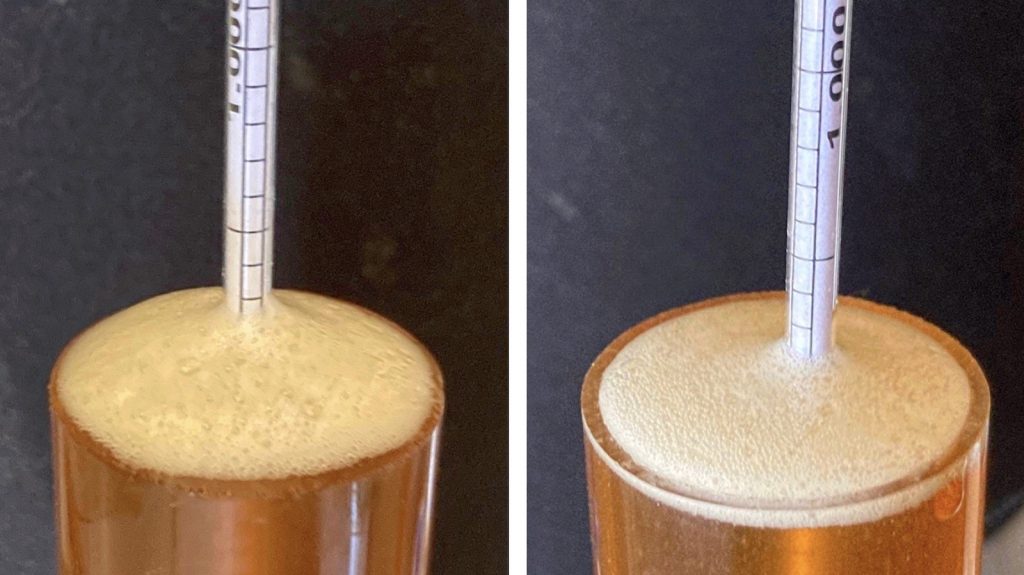
At this point, I set the controller on my glycol chiller to 40°F/4°C and left the beers alone overnight to cold crash. The following day, after purging the kegs with CO2, I gently open the lid on one and added the keg hop charge, which was in an identical stainless mesh filter as the dry hop batch.
After a quick purge with CO2, the beers were pressure transferred into their respective kegs.
The filled kegs were placed in my keezer and left to carbonate for a couple weeks before they were ready for evaluation.

| RESULTS |
Due to social distancing practices as a result of the COVID-19 pandemic, data for this xBmt was unable to be collected in our typical manner. As such, temporary adaptations were made involving the author completing multiple semi-blind triangle tests in as unbiased a way as possible.
Utilizing 4 opaque cups of the same color where 2 were inconspicuously marked, one set was filled with the dry hopped beer while the other set was filled with the beer that was keg hopped. For each triangle test, 3 of the 4 cups were indiscriminately selected, thus randomizing which beer was the unique sample for each trial. Following each attempt, I noted whether I was correct in identifying the unique sample. Out of the 10 semi-blind triangle tests I completed, I needed to identify the unique sample at least 7 times (p<0.05) in order to reach statistical significance. In the end, I correctly identified the unique sample 9 times (p=0.0004), indicating my ability to reliably distinguish an English IPA that was dry hopped from one that was keg hopped with the same variety and amount of hops.
While I wasn’t 100% on my triangle test attempts, 9 out of 10 is pretty damn close, and I felt the difference between the beers was quite noticeable. The keg hopped beer predictably had a more pungent hop aroma and flavor, which would have been great in an American IPA, but I felt was kind of odd in this English version. Factoring in the better clarity of the dry hopped beer, I’d have to say it was my most preferred.
| DISCUSSION |
Dry hopping is a ubiquitously practice method used to impart pungent hop character to beer, namely those of the IPA sort, and the fact it’s been so commonly relied on for as long as it has is evidence of its effectiveness. However, over time, the fresh hop character imparted by dry hopping tends to fall off, which has led some to adding a charge of hops to the keg and leaving it in contact with the beer while it’s being served. My ability to reliably distinguish an English IPA that was dry hopped from one that was keg hopped suggests each method imparts its own unique characteristics.
The fact the keg hopped beer was in contact with the hops for a longer duration than the dry hopped batched seems a plausible explanation for these results, though the perceived difference may also be a function of beer temperature. Curiously, these findings contradict those from a prior xBmt, which left me wondering if hop variety and amount might play a role as well.
Keg hopping naysayers often opine that using the method results in beer with grassy or vegetal off-flavors, but that’s not what I experienced at all. Rather, I perceived the keg hopped beer as simply being more hoppy, which indicates to me that keg hopping may be an excellent lever for brewers of certain styles. While I didn’t feel the added EKG hop character benefitted the English IPA brewed for this xBmt, I would absolutely consider keg hopping other types of IPA made with fruitier American or New World varieties.
If you have any thoughts about this xBmt, please do not hesitate to share in the comments section below!
Support Brülosophy In Style!
All designs are available in various colors and sizes on Amazon!
Follow Brülosophy on:
FACEBOOK | TWITTER | INSTAGRAM
If you enjoy this stuff and feel compelled to support Brulosophy.com, please check out the Support page for details on how you can very easily do so. Thanks!



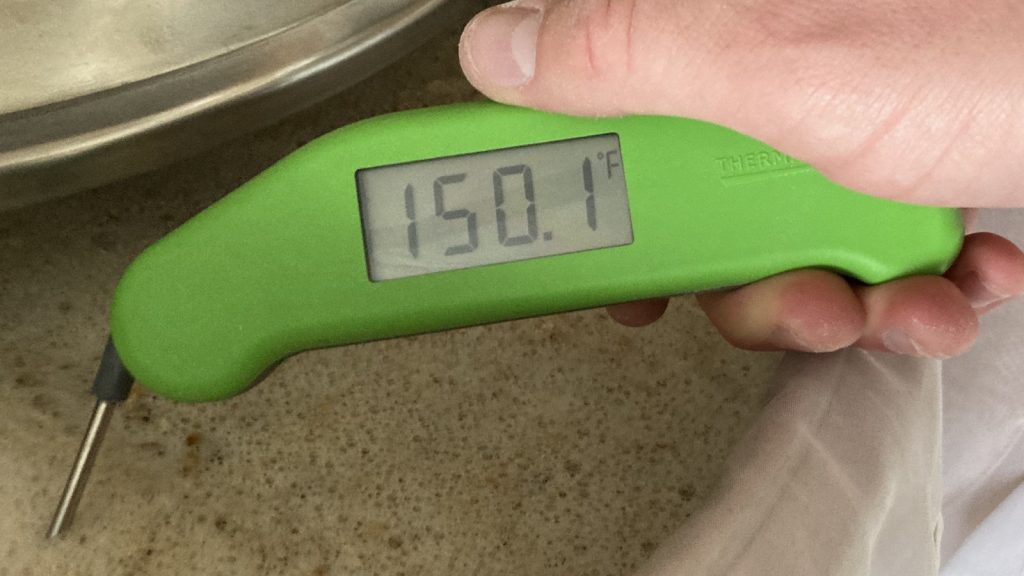
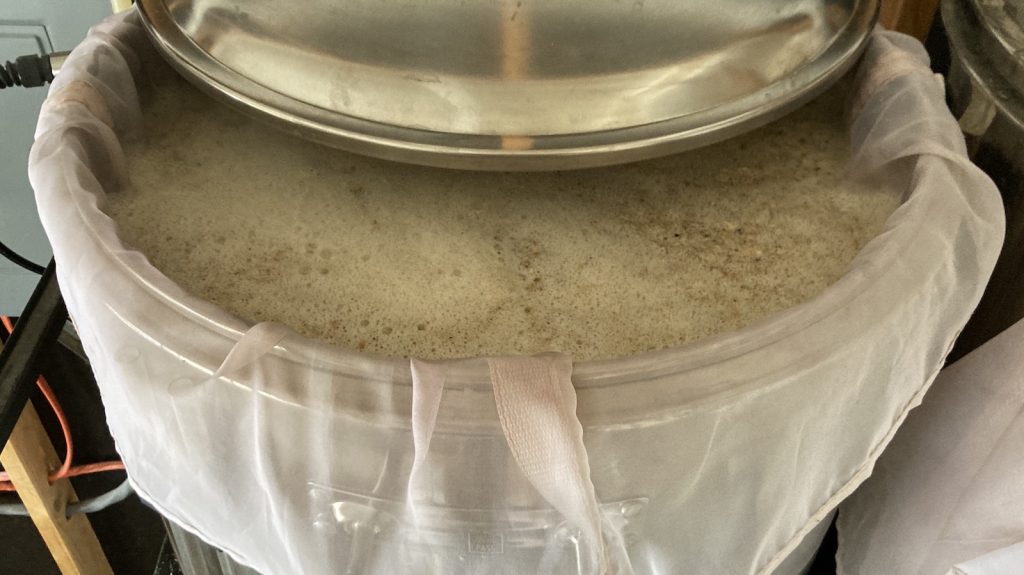
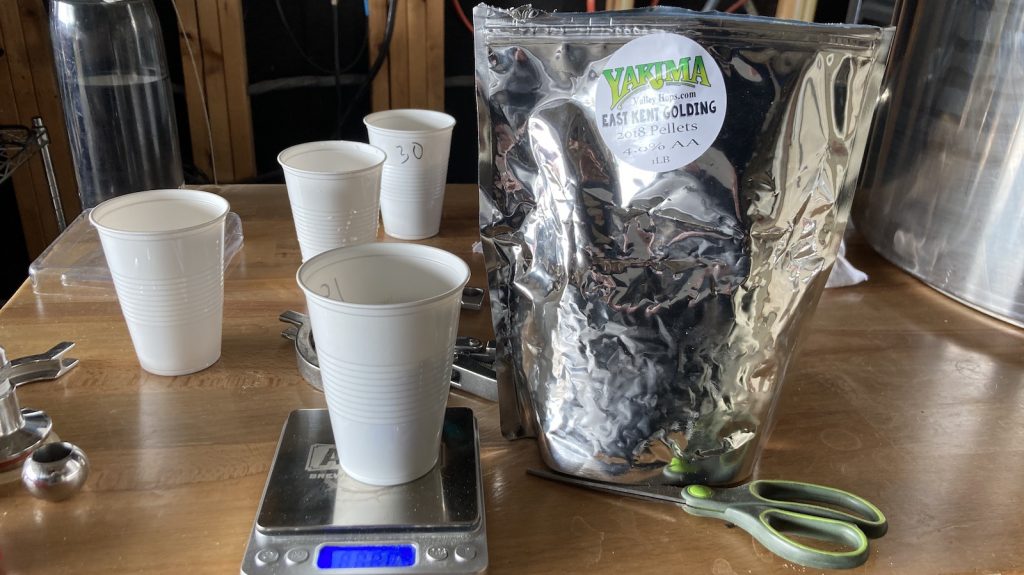


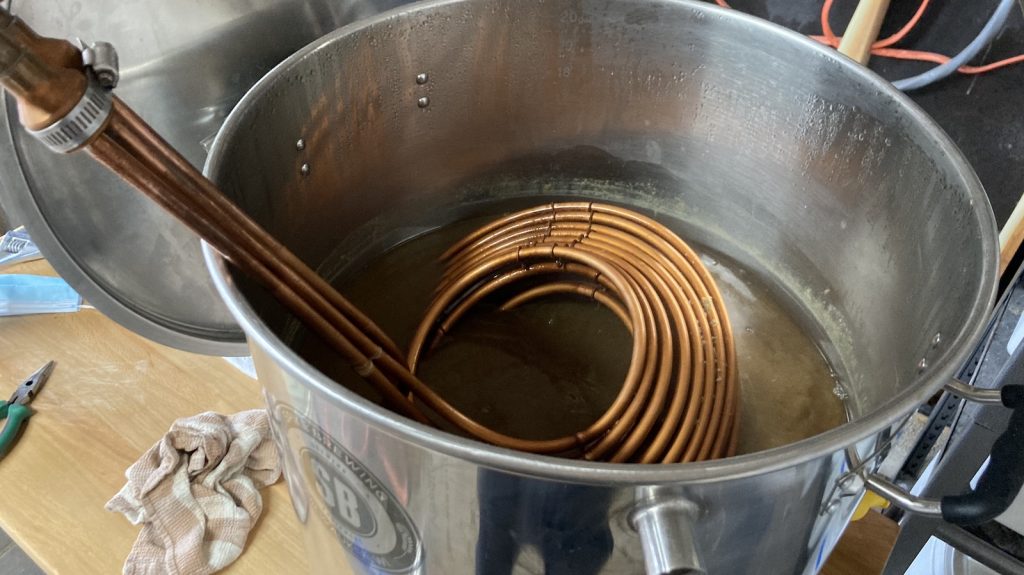
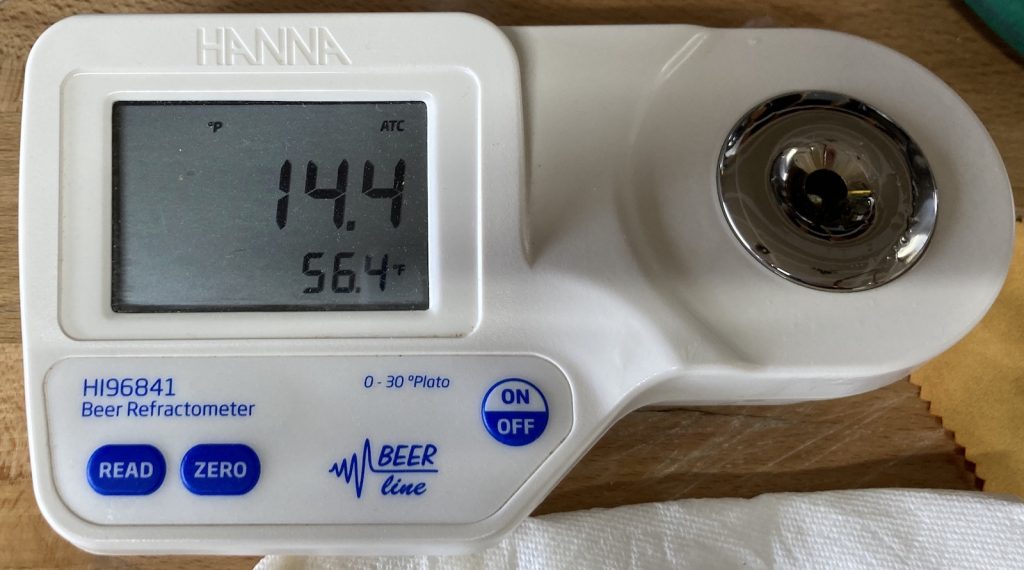
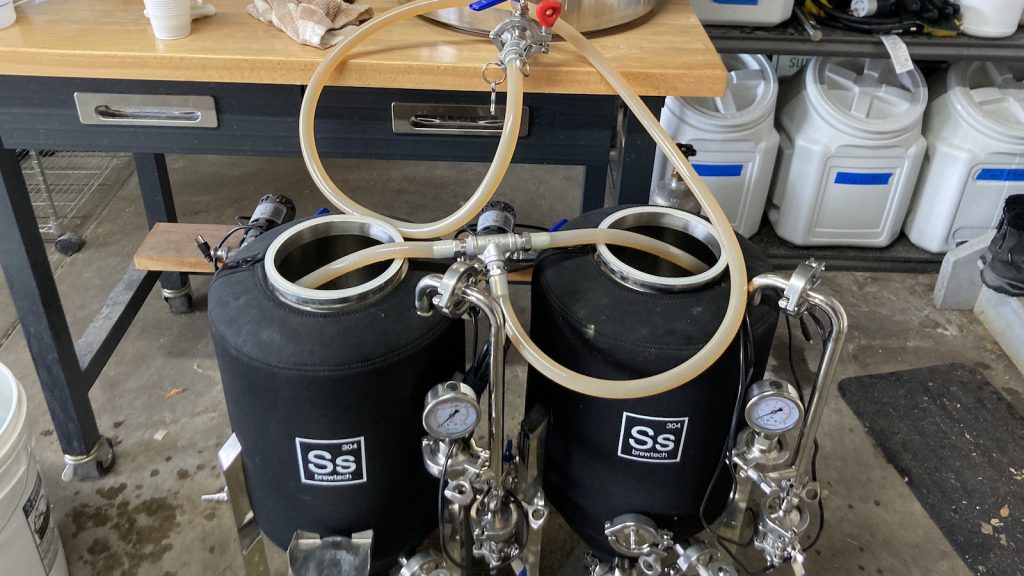
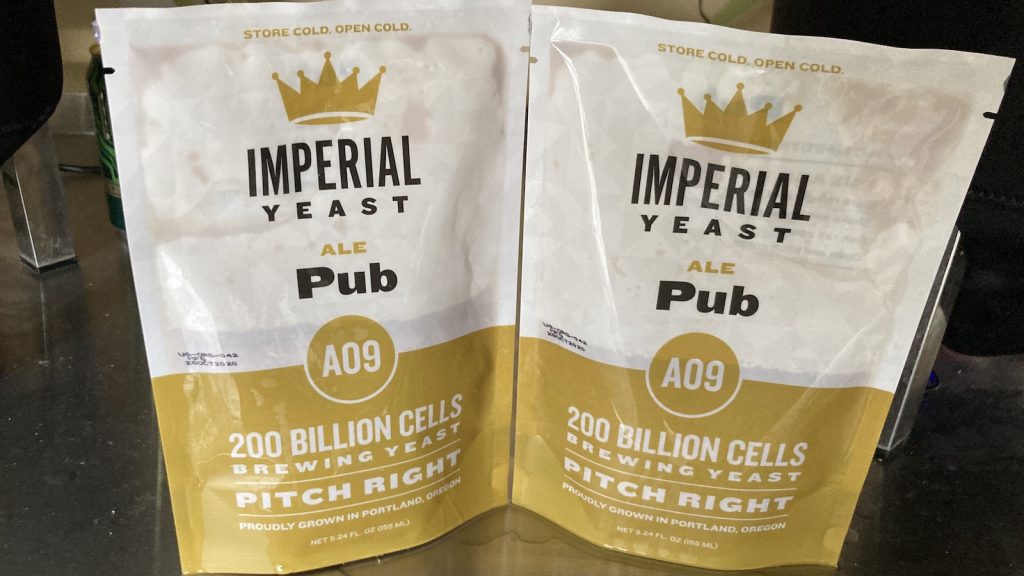
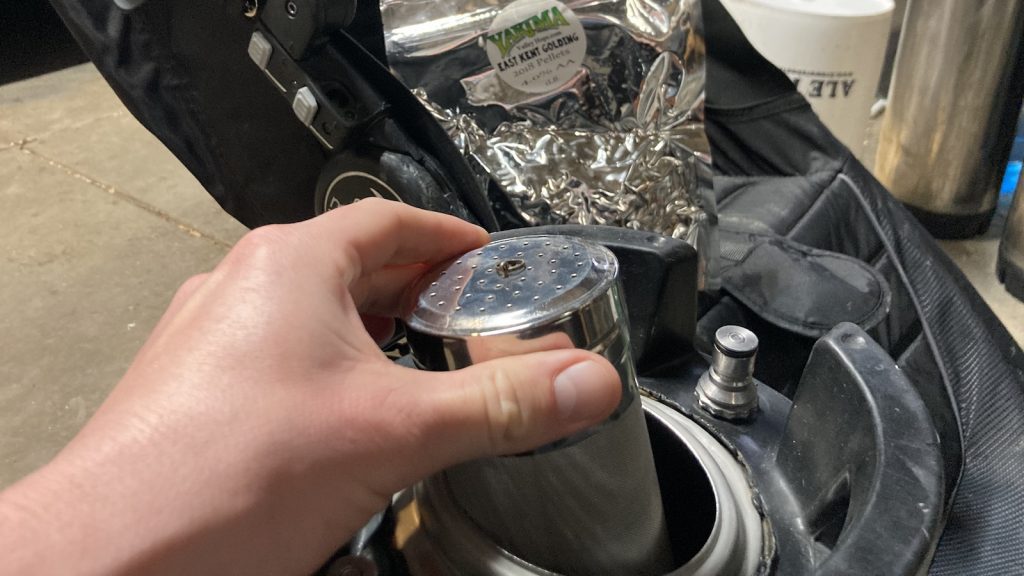
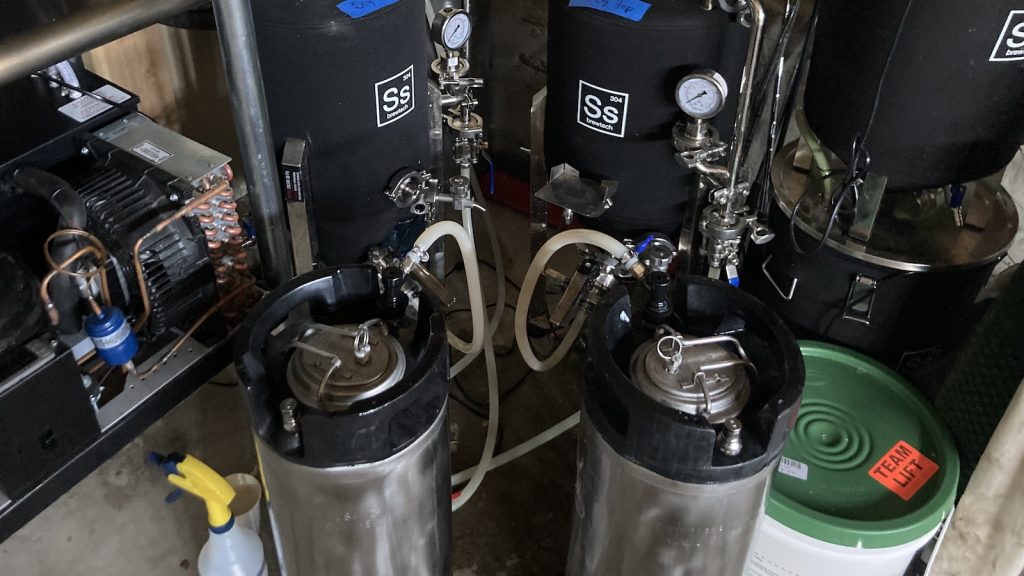











10 thoughts on “exBEERiment | Dry Hopping vs. Keg Hopping An English IPA”
I pretty much always find I am not very happy with my keg hopped beers to the point where I rarely do it any more unless I really find one lacking. While I pretty much always like more more more dry hopping in my hoppy pales, something unpleasant always happens to the keg hopped ones. The fact that I often ferment in kegs, and under pressure lads me to think it’s something to do with colder temperatures as all other factors are pretty much equal. I know this seems counterintuitive, and I didn’t want to trust my perception but I’ve wasted enough hops now to just trust it. Cold hopped beer tastes odd to me. Perhaps vegetal is the word for it. I have no reasonable explanation for this, however I did hear a pro brewer mention the same thing somewhere recently that made me feel happier in my perception.
That was really interesting. A few collegues from my homebrew club have tried keg hopping before, both on west coast and new england IPAs. They were just wonderful. I always thought leaving hops in contact with beer until the keg is empity would create some grassy off-flavours. Those beer I tried were really young beers and the keg hops were added less than a week. I think it would be a nice a nice test to leave the keg hops in contact for about a couple of month to see if there’s any off-flavour impact.
Thanks for the insight. I was really interested in the result of this exbeeriment. I think it would be really interesting to see how the two batches compared after a couple of months or so to get some idea of how the two methods age comparatively.
I’ve got an ESB that’s had 2 months to the day of being kegged with EKG and no grassy flavours so I’m definitely going to be doing it again.
I’ve been doing experiments brewing with kveik at 38c and find all late hopping with that sort of a waste so I’m going to try moving later hops to the keg. It’s something I’m just doing for the hell of it because I don’t think the speed of fermentation you get with kveik that much of a bonus.
And to any British viewers CML Gretel and Kristalweizen brew out great at 38c and it actually tastes like beer at the end rather than orange squash which the voss produces.
Great idea, great execution, great article. Everything great! Ima gonna keg hop my IPA!
I love this for all the wrong reasons…
1. English IPA
2. 30 minute boil
3. Hops in a stroller
Keg hopping always feels like cheating. I need to get over that. I suppose many of the pros would do it if they could.
When I keg hop, I use dental floss to tie the hop filter to the keg lid. This way the hops are not in contact with the beer the whole time it’s in the keg. I think about the top third or so has contact with the hops. I think this stops the grassy thing from happening.
I always dry hop and keg hop my IPAs. But I also use a floating dip tube. That way the suspended particles sink and I have clear beer in a few days after kegging.
The dry hops are in contact with the beer for 24-48 hours before kegging. Then the keg hops stay in until the keg is done. I notice the keg hops adding to the hop aroma after a week.
So to me both are needed for extreme hoppiness.
I’ve tried keg hopping, but ended up with a bitey hop bitterness that I assume is from fine hop particles. I used a similar SS keg charge like this but maybe needed a finer mesh to keep particles out. Anyway will probably stick to dry hopping. Anyone else have this experience?
I would caution those who wish to keg hop, there is quite a bit of difference between hop varieties and what you end up with in the keg. I have had good luck with one variety and an absolute disaster with another. If you do keg hop, make sure you vent the keg a couple of times after sitting on the hops for a day or two. My experience with a double IPA, keg hopped with cascade was a strong, vegetal, cucumber like flavor that was awful. It dissipated after venting the keg and removing the hops about 4 days after addition. It ended up being a good beer. The time I added Idaho 7 to a hazy, terrible. Grossly vegetal and grassy and would not improve, even after removal and venting. In my experience, dry hopping provides reliable and delicious results.